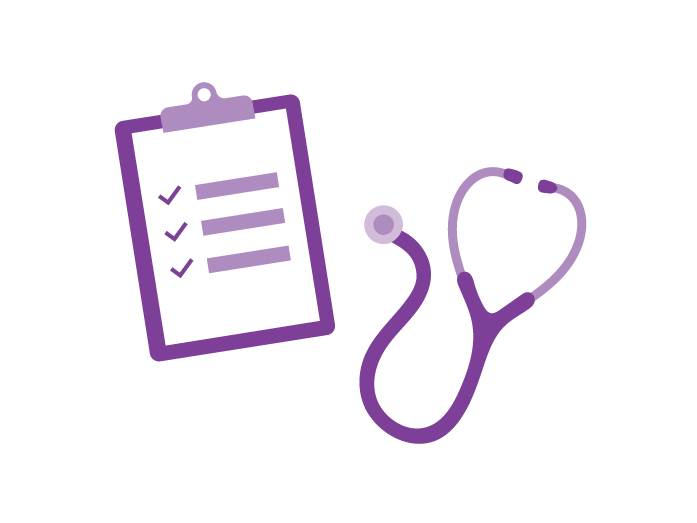The information you will be accessing is provided by another organization or vendor. If you do not intend to leave our site, close this message.
Should I sign up for Medicare when I turn 65?
 By Mark Pabst
By Mark Pabst
For over 50 years, most Americans have received a pretty memorable present on their 65th birthday: Medicare.
Medicare is the government-sponsored health care program for people 65 and over, as well as a few others who aren’t yet 65. Your first opportunity to enroll when you turn 65 is during your Initial Enrollment Period (IEP). That’s the period of seven-months around your 65th birthday – running from the three months before your birthday month, through the month of your birthday and through the three months after your birthday month.
But should you enroll in Medicare when you first become eligible?
Why would anyone wait to enroll in Medicare?
First let’s talk about how Medicare is organized and what it covers.
Medicare is divided into different parts that provide you with several coverage options. Part A covers things like hospital stays. Part B covers things like visits to your doctor. Because Parts A and B were the first two parts of Medicare, together they are often referred to as Original Medicare. With Part B you pay a monthly premium to maintain your coverage.
Medicare also includes a part that covers prescription drug benefits, called Medicare Part D. Part D plans are offered through private health insurance companies. Like Part B, you generally pay a monthly premium and other costs for your Part D benefits.
Visit “Unpacking the Parts of Medicare” to learn more about the parts of Medicare and what they cover.
Some people may not want to enroll in Medicare right away to avoid the cost of these premiums. But, it’s important to keep a few things in mind. First, the premiums give you access to Medicare health and drug coverage. Second, if you wait until after your Initial Enrollment Period to enroll in Medicare, you might have to pay a late enrollment penalty for coverage.
Not everyone who delays enrollment is subject to penalties. The most common exception is for people who are actively working and have health coverage through an employer or union – or through their spouse’s job or union affiliation. Let’s look at how this exception works.
So, what if I already have coverage?
If you already have coverage through another source, don’t simply assume that you won’t be subject to a late enrollment penalty. You need to understand how your current coverage works with Medicare. To answer questions about your current insurance, contact your benefits administrator or plan provider. You’ll want to understand:
- If their drug coverage is equivalent to Medicare’s (called creditable coverage)
- And whether the two insurances can work together
Generally:
- If you have retiree coverage, Medicare recommends you sign up for Part A and Part B when you’re first eligible.
- If you have coverage through an employer where you (or your spouse) are currently working, the size of the employer determines if you can delay enrolling in Medicare without penalty.
- If coverage is through a company with 20 or more employees, you may be able to delay enrollment in Medicare without penalty.
- If coverage is through a company with less than 20 employees, Medicare recommends signing up for Part A and Part B when you’re first eligible.
To learn more about when you should sign up for Original Medicare, find out more on Medicare.gov.
There are also specific rules that apply to whether you pay a penalty for late enrollment in Medicare Part D. Do you have prescription drug coverage through your employer that pays, on average, at least as much as Medicare’s standard? If not, then you could be subject to a penalty if you don’t enroll in prescription drug coverage when you first become eligible for Medicare. Once again, if you aren’t sure whether your prescription drug coverage meets this requirement, contact your plan provider or benefits administrator.
What are the penalties associated with late enrollment?
If you don’t meet the criteria for an exception, you may be subject to a penalty. This comes in the form of higher premiums for Part B and/or Part D. How much do your premiums go up if you don’t have alternate coverage and don’t enroll when you first become eligible? That depends on how long you wait. But the longer you delay, the higher your premium will be.
How much do your premiums go up if you don’t have alternate coverage and don’t enroll when you first become eligible? That depends on how long you wait.
For example, your monthly premium for Medicare Part B will go up 10 percent for each full 12-month period that you could have had Part B but didn't sign up for it.
For your Medicare Part D coverage, Medicare calculates the penalty by multiplying 1 percent of "the national base beneficiary premium" ($32.74 in 2023) by the number of full months you didn't have Part D or other drug coverage. The monthly premium is rounded to the nearest $0.10 and added to your monthly Part D premium.

Understanding the Medicare Part D penalty
The penalty for Part D/prescription drug coverage is 1% of the average Part D premium multiplied by the number of months you are late enrolling. In 2023, the average premium is $32.74 a month.
If you delay signing up for Part D by one year, here’s a look at how the penalty works:
$.3274 - 1% of standard Part D monthly premium (2023)
X
12 - Months in a year
___________
$3.93 - Additional amount you will pay each month
X
12 - Months in a year
___________
$47.16 - Amount additional you will pay annually
Over time, the penalty adds up.
Here’s an example:
Joe signs up for Part D coverage at 65.
Jack signs up for Part D coverage at 68.
By the time they reach 85, Jack could pay at least $1,226 more than Joe for his Part D premiums – for three fewer years of coverage.

Understanding the Medicare Part D penalty
The penalty for Part D/prescription drug coverage is 1% of the average Part D premium multiplied by the number of months you are late enrolling. In 2023, the average premium is $32.74 a month.
If you delay signing up for Part D by one year, here’s a look at how the penalty works:
$.3274 - 1% of standard Part D monthly premium (2023)
X
12 - Months in a year
___________
$3.93 - Additional amount you will pay each month
X
12 - Months in a year
___________
$47.16 - Amount additional you will pay annually
Over time, the penalty adds up.
Here’s an example:
Joe signs up for Part D coverage at 65.
Jack signs up for Part D coverage at 68.
By the time they reach 85, Jack could pay at least $1,226 more than Joe for his Part D premiums – for three fewer years of coverage.
Do I wait or not?
Ultimately, only you can determine when it’s best for you to enroll in Medicare once you’re eligible.
Will you have coverage that gives you an exception to delay enrollment without being subject to a penalty? Be sure to check with your benefits administrator before making a decision.
If you’re worried about paying the premiums associated with certain parts of Medicare, consider the benefits that come with your premiums. After all, you’ve earned those benefits.
For more information on how and when to enroll, go to our guide to Medicare enrollment.
About the author
Mark Pabst has worked as a writer and researcher in the health care field for almost two decades. When not writing about health he tries to stay healthy through activities like hiking, climbing and paddling in the far flung corners of his native state of California. However, despite his best efforts he still has a few unhealthy habits he can’t shake, most notably a weakness for jelly donuts.
Y0001_NR_29946_2022_C
72.00.338.1



.png)